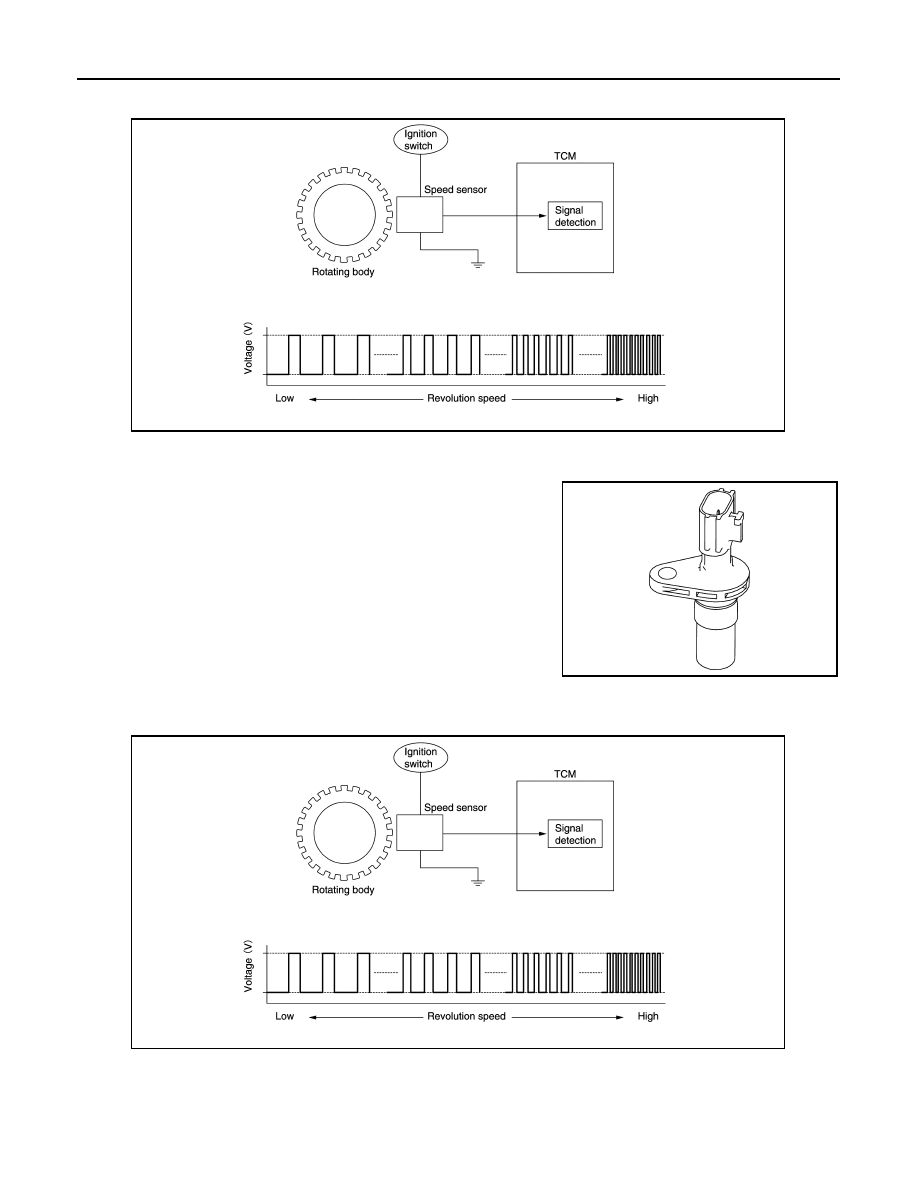Qashqai J11. Transaxle & Transmission - part 28

TM-434
< SYSTEM DESCRIPTION >
[CVT: RE0F10G]
COMPONENT PARTS
• The output speed sensor generates an ON-OFF pulse signal according to the rotating body speed. TCM
judges the rotating body speed from the pulse signal.
CVT CONTROL SYSTEM : Input Speed Sensor
INFOID:0000000010245523
• The input speed sensor is installed to the front side of transaxle
case.
• The input speed sensor detects input shaft speed.
• The input speed sensor generates an ON-OFF pulse signal according to the rotating body speed. TCM
judges the rotating body speed from the pulse signal.
CVT CONTROL SYSTEM : CVT Fluid Temperature Sensor
INFOID:0000000010245524
• The CVT fluid temperature sensor is installed to control valve.
• The CVT fluid temperature sensor detects CVT fluid temperature in oil pan.
JSDIA1824GB
JSDIA3074ZZ
JSDIA1824GB